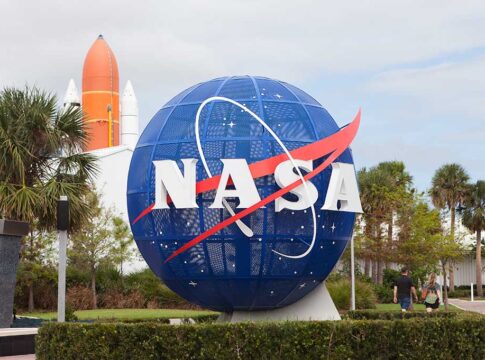Every time you open the newspaper, turn on the television, or browse the internet, the military is doing something innovative.The US military’s X-37B spaceplane is pushing the boundaries of orbital science. SpaceX Falcon Heavy launched the X-37B space plane on the OTV-7 mission in December 2023. The aerobraking maneuver aims to safely dispose of the service module component. The purpose of an experimental flight is to demonstrate the vessel’s capability while using less fuel.
The X-37B’s Revolutionary Aerobraking Technique
The United States military’s X-37B space plane, a classified unmanned spacecraft developed by Boeing for the Department of Defense, is currently demonstrating advanced capabilities on its seventh mission, OTV-7. The X-37B, launched in December 2023 aboard a SpaceX Falcon Heavy rocket, is now orbiting Earth in a highly elliptical path, reaching altitudes far beyond those of typical satellites.
The X-37B’s use of an innovative aerobraking technique distinguishes this mission from others. Instead of using fuel, this method allows the space plane to adjust its orbit by manipulating atmospheric drag. This approach is significant because it has the potential to extend mission durations and improve space operations’ sustainability.
The DAF Rapid Capabilities Office, in partnership with the United States Space Force, is scheduled to launch the 7th mission of the X-37B Orbital Test Vehicle on Dec. 7 from Kennedy Space Center. It will conduct tests / evals. 👇 #X37B #USSF52 https://t.co/OKOHUhGfG2
— United States Space Force (@SpaceForceDoD) November 8, 2023
Experimental research and classified missions
While the X-37B’s mission details are largely unknown, it is known that the spacecraft is conducting experimental research, including studies on the effects of space radiation on various materials. This research could be extremely beneficial for future long-duration space missions and the development of more resilient spacecraft components.
A Boeing Space video shows the X-37B’s underbelly glowing as a result of atmospheric friction during aerobraking. This visual evidence highlights the mission’s technical challenges and achievements.
The U.S. Space Force (🇺🇸) confirmed the X-37B’s OTV-7 mission is scheduled to launch on a Falcon Heavy on December 7.
⁰The X-37B spaceplane will operate in “new orbital regimes” and test “future space domain awareness technologies.”(Old photos) https://t.co/iPrWQPFwTb pic.twitter.com/X70aOG6zSj
— Bizjets of War (@bizjetsofwar) November 8, 2023
Implications for Future Space Operations
The X-37B’s aerobraking technique is more than just a technological demonstration; it represents a significant advancement in sustainable space exploration. The X-37B demonstrates a method of reducing fuel requirements for future space missions by adjusting its orbit using atmospheric drag rather than propellant.
Boeing engineer John Ealy emphasized aerobraking’s ability to save fuel while also extending mission capabilities. Furthermore, this maneuver serves a practical purpose by safely disposing of service module components, addressing the growing issue of space debris.
Secretary of the Air Force Frank Kendall and Gen. Chance Saltzman have both praised the aerobraking technique as innovative and significant. Their support emphasizes the technology’s strategic importance for US space operations, as well as its broader implications for space exploration.
Enhancing US Space Capabilities
Boeing representatives Holly Murphy and Michelle Parker have emphasized the X-37B’s critical role in expanding US space capabilities and testing new technologies. The aerobraking maneuver’s success not only demonstrates technical prowess, but also puts the United States at the forefront of long-term space operations.
As the X-37B continues its mission, the data gathered and lessons learned will most likely be used to inform future space vehicle design and mission planning. The ability to conduct long-duration operations with less fuel opens up new possibilities for both military and civilian space endeavors, potentially revolutionizing our approach to orbital missions and deep space exploration.
Sources:


